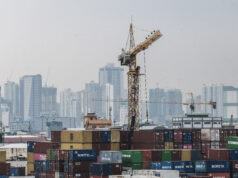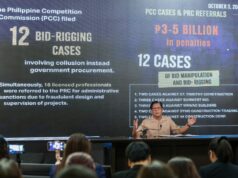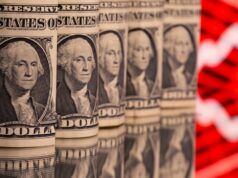BSP ready to ease policy ‘if warranted’
THE central bank still has room for further easing if the need arises, Bangko Sentral ng Pilipinas Governor Benjamin E. Diokno said.
“With the policy rate at 2.25% and inflation well within target, there is room for further adjustment in the key rate. Also, there is room to further reduce the reserve requirement,” he said in an online investor conference with Nomura Holdings on Monday.
Mr. Diokno’s statement came after the Monetary Board on Thursday maintained the overnight reverse repurchase, lending, and deposit facilities at record lows of 2.25%, 2.75%, and 1.75%, respectively.
The BSP chief said they went for a “prudent pause” given the manageable inflation outlook and an observed pickup in economic activities as lockdown measures were eased.
The Monetary Board’s decision to keep rates at its fourth policy review for the year followed aggressive easing at the earlier part of 2020 with 175 basis points (bps) of reduction in benchmark interest rates.
“Let me be clear: the BSP is prepared to do more if warranted. The BSP remains committed to a disciplined- and evidenced-based monetary policy making as it pursues its price stability objective,” Mr. Diokno said.
The dovish guidance from Mr. Diokno is unlikely to translate to another policy easing in the near term, according to analysts.
“It’s possible (rate easing) but probably not this year. Compared to other countries, our BSP has done more,” BDO Unibank, Inc. Chief Market Strategist Jonathan L. Ravelas said in a phone call.
He noted the BSP may still be gauging the impact of its previous moves and its impact on the economy given monetary policy takes a while before being felt by the financial system.
The BSP’s decision to keep rates despite its higher inflation outlook for the year of 2.6% from 2.3% is also a sign that a rate cut is unlikely this year, said Mr. Ravelas.
To recall, Mr. Diokno said last week that their monetary policy stance could “probably hold for the next few quarters” as their previous moves were made in anticipation of the trajectory of the crisis.
“I think we’ll have to see what happens in the third quarter GDP (gross domestic product) numbers,” he said, adding this will be a key consideration for monetary policy aside from the impact of Bayanihan II’s implementation and the previous policy moves by the BSP.
The economy slumped into a recession after a 16.5% contraction in GDP in the April to June period following the 0.7% drop in the first quarter as the lockdown halted economic activity. Economic managers expect the third quarter GDP to fare better than the previous quarter as restrictions eased.
Alvin P. Ang, an economist from Ateneo de Manila University, said further easing of policy rates is unlikely in the near-term.
“I doubt that they will cut rates because they’re already very low and lending is not aggressive so far,” Mr. Ang said in a text message.
He said further reduction in the reserve requirement is only in the cards “when liquidity dries up”.
In June, domestic liquidity or M3 rose by 14.9% year on year, a slower expansion compared to the 16.7% seen in May, BSP data showed. This ended three successive months of faster liquidity growth.
Meanwhile, bank lending growth continued to slow for the third consecutive month in June. Outstanding loans disbursed by big banks inched up 9.6% during the month, easing from the 11.3% logged in May.
The Monetary Board is authorized to cut up to 400 basis points of banks’ RRR this year. — Luz Wendy T. Noble



